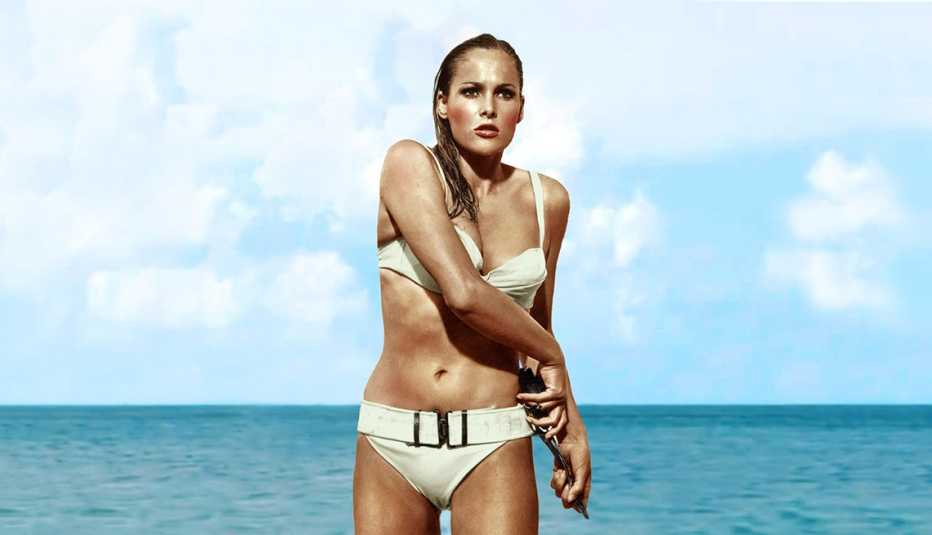AARP Hearing Center


Somewhere, in a box of family photographs sitting on a shelf in a closet in my mom’s apartment in Tucson, Arizona, there is a photo, likely a bit faded and slightly out of focus in that charming way only camera technology in the mid-1970s could master. I’m standing in a blue plastic kiddie pool in the backyard of my family home in southeastern Ohio and wearing a blue-and-white-striped bikini. It’s obvious from the expression on my face — mouth wide open and eyes nearly glinting — and the way I stood — hand perched on my left hip, which is jutting out ever so slightly — that I thought I was pretty hot stuff. I was wearing a bikini after all — something I’d seen my teenage sisters wearing to lie out in the backyard — and to me anything they did was the ultimate in cool.
That was the beginning of my love affair with the bikini — one that, looking back through photos, seemed to end on a beach in Mexico in 2016. It’s something that often happens to middle-aged women when our bodies begin to show the rigors of time.
America’s love affair with the bikini, however, goes back a little further and, according to Daniel James Cole, adjunct assistant professor at New York’s Fashion Institute of Technology, shows no signs of ending anytime soon. He says that there are really two “origin stories” for the two-piece bathing suit we commonly refer to as the bikini.
Story one begins with French designer Jacques Heim, who was experimenting with women’s leisurewear. In the 1930s, Heim designed some two-piece outfits Cole describes as bra tops and a wrap around skirt over shorts — which “were pretty revolutionary for the time,” Cole adds. Then came World War II and France’s occupation. It wasn’t until the touring fashion exhibit titled “Théâtre de la Mode,” which visited sites in Europe and the U.S. to raise funds for war survivors and to revive the French fashion industry, that Heim’s creation, which by then he had named the “Atome,” was seen on a broader stage.
“It wasn’t completely from left field for French women, but it was a little bit avant-garde,” Cole says, noting that while Heim continued to promote the design, it didn’t catch on immediately and adjustments were made to the design to make it “briefer,” Cole adds. “It was one of those things that got more press than it generated actual wearership. But it did get hype.”
It was publicly introduced on the French Riviera in the summer of 1946.




































































More From AARP
The Best Summer Songs of Our Lives
These unforgettable tunes will send you on a trip down memory lane
How to Avoid the Bites and Stings of Summer Season
Why some people attract pesky insects; 5 ways to reduce your pest appeal
Singing the 501 Blues
Levi's signature jeans celebrate 150 years of enduring fashion.